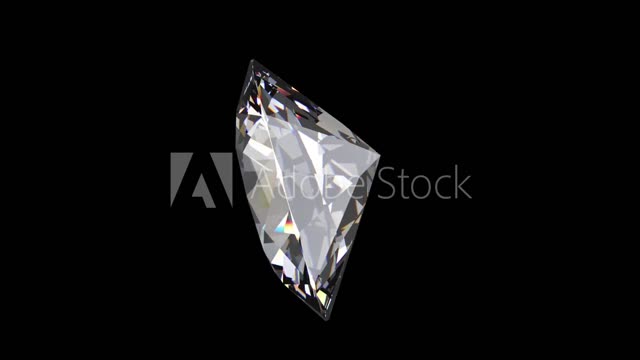Premium Only Content

Discovery of a rare type of diamond in space.. How it was formed there
Discovery of a rare type of diamond in space.. How it was formed there SCIENCE HOME
Scientists Discover Strange Diamonds In Meteorite From Another Planet
‘லோன்ஸ்டேலைட்’ என்று அழைக்கப்படும் அரிய வகை வைரம் தொலைதூரத்தில் உள்ள சிறிய கிரகத்தில் இருந்து கண்டுபிடிக்கப்பட்டுள்ளது
விண்வெளி குறித்த ஆராய்ச்சியில் பல நாடுகள் ஈடுபட்டுள்ளன. ராக்கெட், செயற்கைகோள் அனுப்பி ஆராய்ச்சியில் ஈடுபட்டு வருகின்றனர். இதன் மூலம் புது புது கண்டுபிடிப்புகள் வெளியாகிறது. அந்தவகையில், மோனாஷ் பல்கலைக்கழகம், ஆர்எம்ஐடி பல்கலைக்கழகம், சிஎஸ்ஐஆர்ஓ, ஆஸ்திரேலிய சின்கோட்ரான் மற்றும் பிளைமவுத் பல்கலைக்கழகங்களைச் சேர்ந்த ஆராய்ச்சியாளர்கள் இணைந்து ஆய்வு ஒன்றை மேற்கொண்டனர்.
அதில், ‘லோன்ஸ்டேலைட்’ (lonsdaleite) என்று அழைக்கப்படும் அரிய வகை வைரம் தொலைதூரத்தில் உள்ள சிறிய கிரகத்தில் இருப்பதை கண்டுபிடித்துள்ளனர். தற்போது பயன்பாட்டில் உள்ள வைரங்களை விட கடினமான மற்றும் உறுதி தன்மை கொண்ட வைரமாக உள்ளது எனக் குறிப்பிட்டுள்ளனர். இந்த வைரம் அரிய வகை வைரமாகும். அறுகோண வடிவத்தில் உள்ளது. (lonsdaleite–a rare hexagonal form of diamond)
ஆய்வு மேற்கொண்ட ஆர்எம்ஐடி பல்கலைக்கழக பேராசிரியர் டூகம் மெக்குலோச் கூறுகையில், “லோன்ஸ்டேலைட் வைரம் அறுகோண அமைப்பில் உள்ளது. இது வழக்கமாக நாம் பயன்படுத்தும் வைரங்களைக் காட்டிலும் கடினமாக உள்ளது. கனசதுர அமைப்பைக் கொண்டுள்ளது” என்றார்.
சுமார் 4.5 பில்லியன் ஆண்டுகளுக்கு முன்பு சிறிய கிரகம் ஒன்று, பெரிய சிறுகோளுடன் மோதியதன் விளைவாக லோன்ஸ்டேலைட் உருவாகியிருக்கலாம் என ஆராய்ச்சியாளர்கள் கூறுகின்றனர். உலகத்தில் இயற்கையாகவே லான்ஸ்டேலைட் உள்ளது என்பதை இந்த ஆய்வு திட்டவட்டமாக நிரூபிக்கிறது.
எங்கு பயன்படுத்தலாம்?
அந்த சிறிய கிரகத்தில் ஏற்பட்ட மோதலுக்கு பிறகு நடந்த சூப்பர் கிரிட்டிகல் இரசாயன நீராவி படிவு செயல்முறையால் லோன்ஸ்டேலைட் உருவாகியுள்ளது என ஆராய்ச்சி வலுவான ஆதாரங்களை காண்பிக்கிறது. மேலும், இந்த இரசாயன நீராவி ஆய்வகத்தில் தயாரிக்கப்படும் வைரங்களுக்கு பயன்படுத்தப்படுகிறது எனக் கூறப்பட்டுள்ளது.
விண்கல்லில் உள்ள சூப்பர் கிரிட்டிகல் திரவம் உயர் வெப்பநிலை மற்றும் மிதமான அழுத்தத்தில் இருக்கும் போது லோன்ஸ்டேலைட் உருவாகியிருக்கலாம் என ஆராய்ச்சி குழுவினர் கூறுகின்றனர். இந்த செயல்முறையின் போது, கிராஃபைட்டின் ஒரிஜினல் வடிவம் மற்றும் கட்டமைப்புகள் பாதுகாக்கப்படுகிறது. பின்னர் சுற்றுச்சூழல் குளிர்ந்து, அழுத்தம் குறைந்த பிறகு, வழக்கமான வைரத்திலிருந்து லோன்ஸ்டேலைட் மாறுகிறது.
ஆய்வுக்கு தலைமை தாங்கிய புவியியலாளர் ஆண்டி டாம்கின்ஸ் கூறுகையில், “லோன்ஸ்டேலைட் தொழில்துறையில் பயன்படுத்தப்படலாம். சிறிய, அதி-கடின இயந்திர பாகங்களை உருவாக்க லோன்ஸ்டேலைட் பயன்படுத்தப்படலாம் என்று கருதப்படுகிறது” என்றார்.
Rare on Earth, common in Space, Diamonds! - What's Science
http://whatsscience.in › rare-on-earth-common-in-space.
It is said that diamonds are formed at the beginning of the solar system. Diamonds in space have formed with different molecules.
Once India was the only producer and exporter of diamonds in the world. Now, India is known to the world for its world-famous diamond ‘Kohinoor’, also spelt as ‘Koh-i-Noor’. But, now it belongs to the queen of England. The name ‘Koh-i-Noor’ means the ‘mountain of light. The originally weighing 186-carat diamond was cut and reshaped into ~108 carats (1 carat = 200 milligrams). But, in general, what is a diamond? And why it shines and attracts so many people worldwide?
Diamond means ‘unbreakable’ in Greek. The finest diamond is the hardest. It is highly thermally conductive natural dense material. It is colourless when chemically pure and structurally perfect. A chemically stable, solid form of carbon, whose atoms are arranged in the crystal form, is known as a diamond. An impurity of one millionth can also bring colour to the diamond; such as blue (boron), yellow (nitrogen), brown (defects), green (radiation exposure), purple, pink, orange or red, etc.
Diamond’s unit cells are stacked together and are of different crystal structures like cube, octahedron, rhombicosidodecahedron, tetrakis hexahedron or disdain dodecahedron. A cubic crystal is one of the most common forms of diamond available. A face-centred cubic lattice has eight unit cells one at each corner atom and one atom in the centre of each face which is shared by two. So, there are a total of eight atoms per unit cell.
AboutUs About us https://bit.ly/3GUPFOa
Contact us +919942258153 kvk.subadhra@ gmail.com
Thank You Very Much for Sharing YourValuable Thoughts
https://a143afv5vdzyit1i2r1rbq1q1t.hop.clickbank.net
-
 7:29
7:29
Clickingcliff
3 years agoNASA Space Shuttle Discovery Review
12 -
 LIVE
LIVE
BubbaSZN
14 hours ago🔴 LIVE - MAFIATHON (COMPLETING THE MAFIA SERIES WITHOUT ENDING STREAM)
231 watching -
 2:50:02
2:50:02
TimcastIRL
5 hours agoTrump Calls Putin During Zelenskyy White House Visit, European Leaders Praise Trump | Timcast IRL
165K55 -
 1:54:34
1:54:34
FreshandFit
10 hours agoBrandon Carter Returns
38.2K5 -
 8:24:47
8:24:47
MissesMaam
10 hours agoResident Evil 4 *FIRST EVER PLAYTHROUGH*💚✨
27.2K3 -
 2:37:55
2:37:55
SlingerGames
3 hours agoSlinger Slays Elden Ring - Pt. 8 - Enduring the Pain
10.9K -
 4:03:01
4:03:01
VapinGamers
4 hours ago $0.24 earnedOff The Grid - Co-Stream with BSparksGaming! Come Join the Mayhem! - !rumbot !music
6.61K -
 1:36:53
1:36:53
Glenn Greenwald
7 hours agoTrump Tries to End War in Ukraine; U.S. is Dangerously Low on Weapons and Munitions Former Trump DoD Official Warns | SYSTEM UPDATE #502
90.2K49 -
 3:00:53
3:00:53
Barry Cunningham
6 hours agoPRESIDENT TRUMP HAS ENTERED THE END GAME AND DEMOCRATS ARE NOW IRRELEVANT!
57.9K70 -
 3:30:32
3:30:32
Jorba4
5 hours ago🔴Live-Jorba4- The Finals
24.4K1